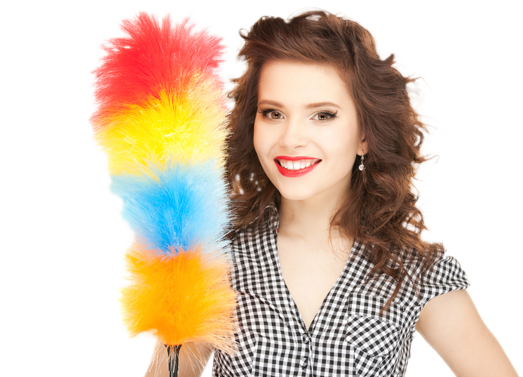Create a Cleaner Ambiance by Removing Pet Odors
Posted on 01/10/2025
Create a Cleaner Ambiance by Removing Pet Odors
Pet ownership brings joy, companionship, and warmth to a home. However, one inevitable challenge is managing and removing pet odors to create a cleaner ambiance. Whether you have a playful pup, a cuddly cat, or other furry friends, keeping your home fresh can sometimes feel like a battle. This comprehensive guide will explore effective methods to eliminate pet smells, share best cleaning habits, recommend products, and help you maintain a welcoming environment for everyone--animals and humans alike.
Understanding Pet Odors: What Causes Them?
Before jumping into pet odor removal tips, it's essential to understand the root causes. Pets can cause odors through:
- Accidents: Urine and feces can leave lingering smells, especially if not cleaned up promptly.
- Dander: Pets constantly shed tiny skin flakes, which can build up and harbor smells.
- Saliva: Dogs and cats groom themselves, spreading saliva, which can collect on fabrics and surfaces.
- Wet fur: The classic "wet dog" smell happens when bacteria on the skin interact with moisture.
Recognizing these sources helps you choose the right strategies to eradicate unpleasant pet odors and create a cleaner atmosphere in your home.

Why Is It Important to Remove Pet Odors?
Persistent pet odors do more than just annoy your nose. They can affect your home's ambiance, influence guest impressions, and even be signs of underlying cleanliness or health problems. Proactively removing pet odors has the following benefits:
- Creates a welcoming environment for visitors.
- Reduces allergens and potential health issues.
- Prevents pets from repeating accidents in the same spot.
- Upholds property value and keeps furnishings in great condition.
Pet odor elimination is key for a truly clean, fresh living space.
Pet Odor Prevention: Cleanliness Starts With Routine
Regular Pet Grooming
Maintaining your pet's hygiene reduces the sources of odors at their origin. Here's what you can do:
- Brush your pets frequently to remove loose fur and dander. This cuts down the chance for odors to settle in your home.
- Bathe your pets as recommended for their breed and type. Overwashing can cause skin problems, so consult your vet for the ideal schedule.
- Clean ears and trim nails: Ears and paws can harbor odor-causing bacteria.
Healthy, clean pets are less likely to be a major source of persistent odors.
Cleaning Pet Bedding and Accessories
Avoid overlooked sources of odors by routinely washing items like:
- Beds and blankets
- Collars and leashes
- Soft toys
- Litter boxes and trays
- Feeding mats
Launder these items weekly using pet-safe detergents for a significant reduction in pet-related smells.
The Best Home Cleaning Routines to Remove Pet Odors
Vacuum and Sweep Frequently
Pet hair and dander can accumulate on carpets, rugs, and floors, carrying strong odors. Vacuum high-traffic areas and pet-favorite spots minimum twice a week. Use HEPA-filtered vacuums to capture even the tiniest particles. Don't forget to:
- Clean under furniture and in hidden nooks.
- Empty vacuum bags or bins regularly to prevent odor build-up inside your appliance.
For hard surfaces, sweeping and damp-mopping will remove stray hair and tracked dirt.
Spot Clean Accidents Immediately
Prompt action is the best way to prevent odors from setting in. For urine and other messes:
- Blot up as much liquid as possible with paper towels or a clean cloth.
- Apply a specialized enzyme cleaner designed for pet stains.
- Allow the cleaner to sit for recommended time to break down odor-causing substances.
- Rinse and blot dry.
Enzyme-based cleaners are highly effective because they break down the actual molecules causing pet smells--unlike traditional cleaning products that simply mask the odor.
Frequent Litter Box and Cage Maintenance
For cat owners or those with caged pets like rabbits and hamsters, litter boxes can quickly become a major source of odors. To achieve a fresher ambiance:
- Remove solid waste daily and completely empty and wash the litter box weekly.
- Use high-quality, odor-control litter.
- Replace pet bedding in cages regularly.
- Consider litter mats and box liners for easier cleaning.
Proactive maintenance is essential for keeping pet areas pleasant and odor-free.
Wash Floors and Hard Surfaces
Even if they seem clean, hard floors and baseboards can harbor pet residues. Use pet-safe disinfectants and mop weekly, especially in your pet's favorite hangouts. Pay extra attention to:
- Entryways and mudrooms
- Kitchens and feeding areas
- Rooms with litter boxes or cages
This not only fights odors but also keeps your home hygienic for both pets and people.
Natural Solutions for Pet Odor Neutralization
Baking Soda: The Classic Deodorizer
Baking soda absorbs and neutralizes odors, making it a pet-friendly solution. Here's how to use it:
- Sprinkle baking soda on carpets and upholstery, let it sit overnight, then vacuum it up.
- Add baking soda to laundry cycles for bedding and pet clothes.
- Place open containers of baking soda in rooms or closets to absorb lingering smells.
Baking soda is safe for pets and effective for general deodorizing.
White Vinegar for Panic Clean-Ups
This household staple is an excellent odor neutralizer:
- Mix equal parts white vinegar and water in a spray bottle to treat accidents on hard floors.
- Use vinegar solution to wipe down surfaces touched by pets.
- For extra freshness, add a few drops of essential oil (ensure oils are pet-safe).
Vinegar's natural acids break down bacteria and help eliminate pet odors at their source.
Activated Charcoal for Ongoing Odor Absorption
Place bowls of activated charcoal around your home to continuously trap unwanted smells. Charcoal is non-toxic, long-lasting, and ideal for small, enclosed areas like closets and pet sleeping nooks.
Choosing Commercial Odor-Eliminating Products
While natural methods are effective, you may need stronger solutions for persistent issues or large spaces. The market offers:
- Enzyme cleaners: Break down organic matter at the molecular level for truly effective pet odor removal.
- Odor-neutralizing sprays: Designed to be sprayed on fabrics, air, or surfaces after cleaning.
- Plug-in air purifiers: Remove odors and allergens with filters or ionization technology.
- Deodorizing candles or gels: Products specifically made for homes with pets are formulated to neutralize rather than mask odors.
When purchasing, always check labels for pet safety and suitability for your needs.
Deep Cleaning Strategies for Stubborn Pet Odors
Carpets and Rugs
Deep cleaning may be required for woven surfaces:
- Shampoo carpets regularly, especially in households with multiple pets.
- Use steam cleaners--the heat kills bacteria and odors naturally without leaving chemical residues.
- Professional cleaning services may be needed annually or after urine accidents.
Upholstery and Furniture
- Remove sofa cushion covers to launder when possible.
- Spray fabric-safe enzymatic cleaners to neutralize deeply embedded odors.
- For leather furniture, use appropriate pet-safe cleaning wipes and conditioners.
Regular maintenance is the key to keeping fabric surfaces smelling fresh and inviting.
Air Purification
If you find that odors persist in the air, invest in an air purifier with a HEPA filter and an activated carbon stage. These are highly effective at capturing airborne pet dander, fur, and odors, giving your home a cleaner, healthier ambiance.
How to Stop Repeat Pet Accidents and Odors
Thorough Cleaning of Previous Accident Sites
Pets have a keen sense of smell; if previous accidents aren't thoroughly cleaned, they may revisit the same spot.
- Mark accident sites with tape until completely cleaned to prevent re-use.
- Apply enzyme-based cleaners and let them work for several hours before rinsing.
- Monitor for repeat behavior and address promptly.
Behavioral Modifications and Training
- Use positive reinforcement for bathroom breaks outside or in the litter box.
- Evaluate diet and hydration; improper nutrition can cause stronger smells.
- Consult your vet for potential medical issues if accidents are recurring.
Consistency and patience are essential for long-term odor prevention and maintaining a cleaner, healthier space for all.
Smarter Home Design for a Cleaner Pet Ambiance
Choose Pet-Friendly, Odor-Resistant Materials
- Hard flooring like tile or hardwood is easier to clean than carpet and less likely to trap odors.
- Washable slipcovers and throws for furniture protect against accidents and simplify cleaning routines.
- Removable, machine-washable curtains and blinds minimize the buildup of hair and dander near windows.
Establish Pet Zones
Designating specific areas for your pets can help contain messes and make daily cleaning easier. Use:
- Easy-to-clean rugs or mats for high-traffic pet zones
- Gated rooms or corners for bedding and feeding
- Outdoor potty areas for dogs that are regularly maintained
Limiting your pet's range can make odor management more manageable on a day-to-day basis.
Maintaining a Cleaner Ambiance: Daily, Weekly, and Monthly Checklists
Daily Pet Odor Control
- Pick up pet waste from litter boxes and yards
- Wipe paws before entering the house, especially after walks
- Spot clean any accidents promptly
Weekly Tasks
- Launder pet bedding, toys, and soft accessories
- Vacuum, sweep, and mop pet activity zones
- Deep clean litter boxes and feeding areas
Monthly Maintenance
- Wash larger items and furniture covers
- Replace or recharge air purifiers, odor absorbers, and charcoal bags
- Check hidden zones for forgotten pet messes
Staying consistent with these habits ensures that pet odors never have a chance to take over your living space.

Common Mistakes When Removing Pet Odors
Even the most diligent pet owners can miss a few key steps. To ensure maximum freshness and minimize pet odor problems, avoid these common pitfalls:
- Only masking scents with air fresheners. Odors must be removed at the source!
- Ignoring ventilation--open windows regularly to let fresh air circulate.
- Waiting too long to address accidents, which allows smells to set.
- Using harsh chemicals that may be unsafe for pets or damage surfaces.
Conclusion: Enjoy a Cleaner, Fresher Home With Pets
Bringing pets into your home shouldn't mean sacrificing a clean, pleasant ambiance. With effective cleaning routines, the right products, preventive strategies, and a bit of patience, you can easily eliminate pet odors and maintain a welcoming, fresh living environment. Whether you're dealing with cats, dogs, or other animal friends, following the guidelines in this guide will help you remove pet odors and create a cleaner ambiance for all. Your home--and your visitors--will thank you!
Want more tips for a pet-friendly yet spotless home? Explore our related articles or leave a question below for customized advice. Together, let's make clean, odor-free spaces a reality--without leaving your furry friends behind!




